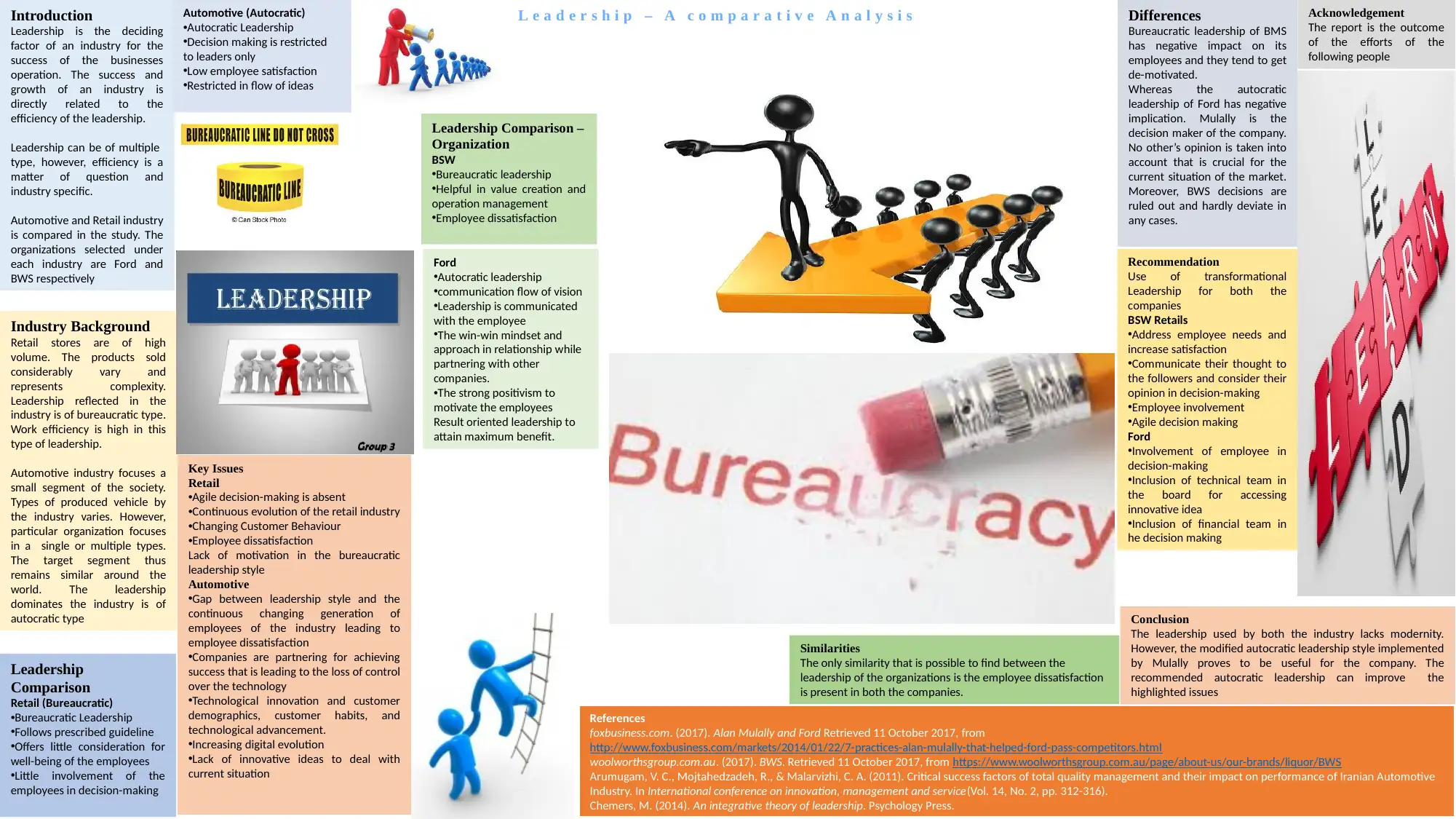BX3174 - Leadership: A Comparison of Automotive and Retail Industries
VerifiedAdded on 2023/06/16
|1
|677
|444
Report
AI Summary
This report provides a comparative analysis of leadership styles in the automotive and retail industries, focusing on Ford (automotive) and BWS (retail). The automotive industry is characterized by autocratic leadership, while the retail industry exhibits bureaucratic leadership. The report identifies key issues in both industries, such as employee dissatisfaction and the need for agile decision-making in retail, and the gap between leadership style and employee expectations in the automotive sector. Similarities between the companies include employee dissatisfaction. The report recommends the use of transformational leadership to address these issues and improve employee satisfaction and decision-making processes. The conclusion emphasizes that the current leadership styles lack modernity, and a modified autocratic leadership style, as implemented by Mulally at Ford, can be beneficial. Desklib offers a variety of solved assignments and past papers to aid students in their studies.


![[object Object]](/_next/static/media/star-bottom.7253800d.svg)